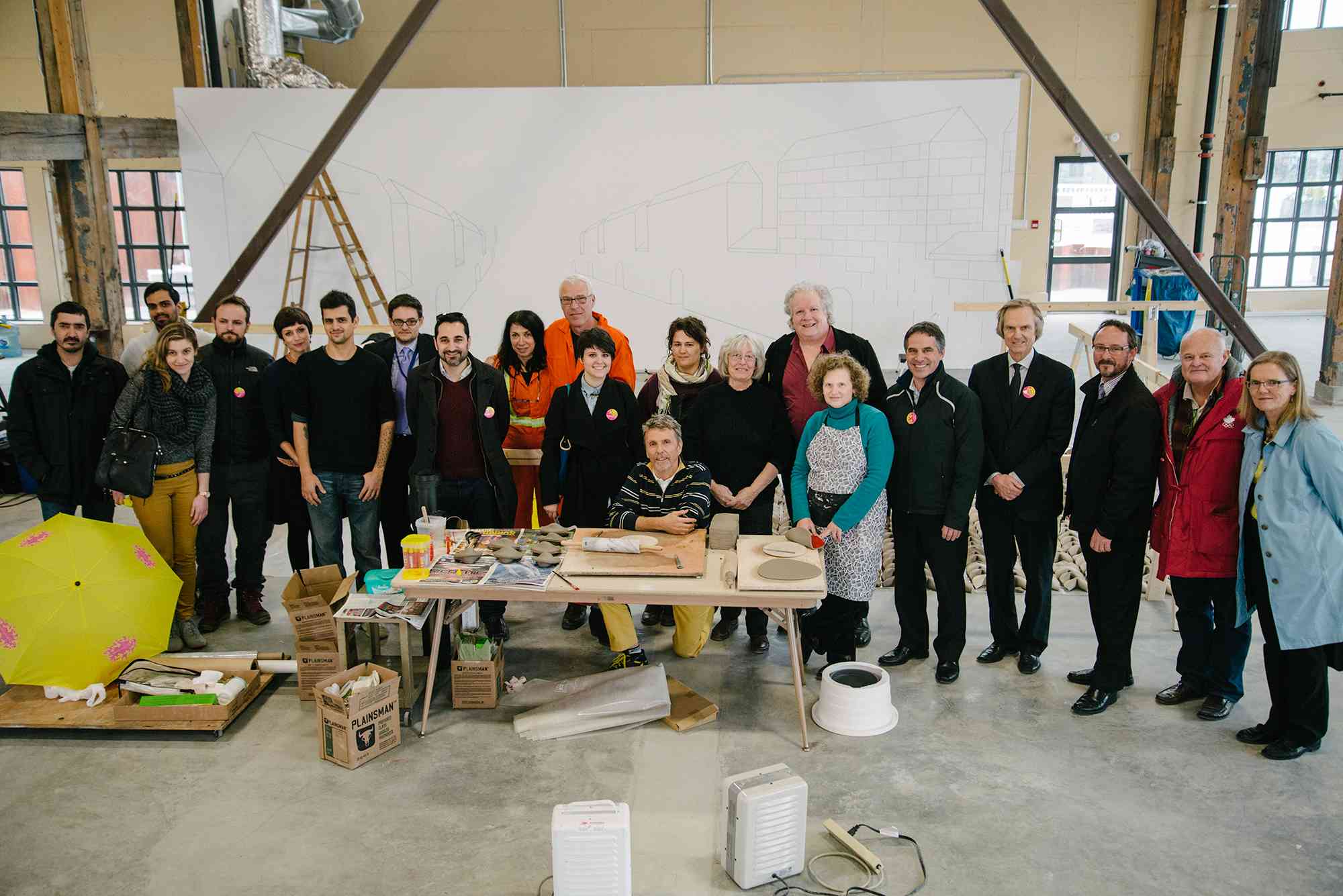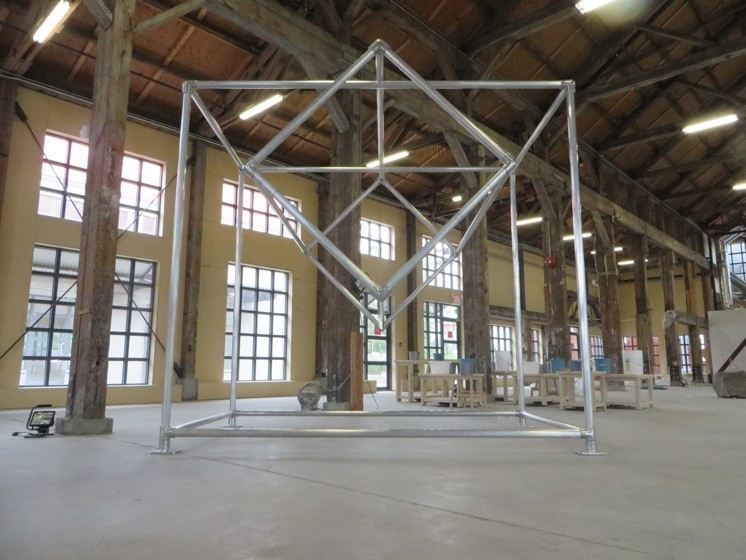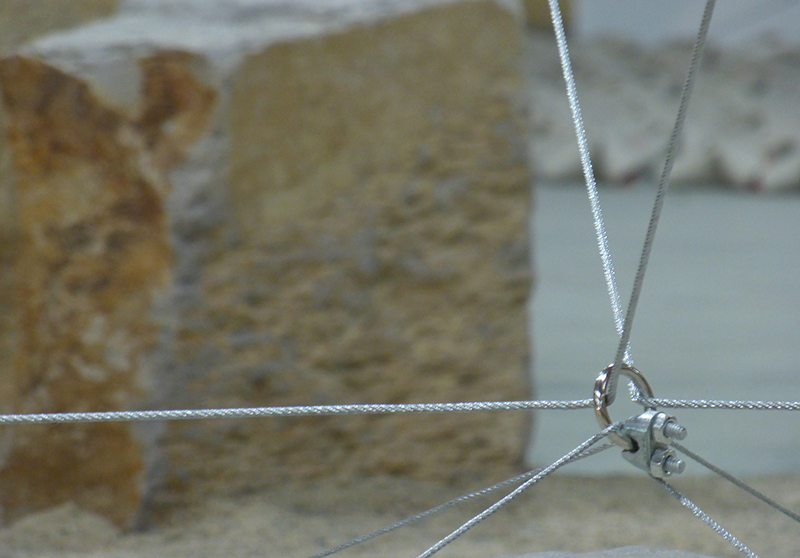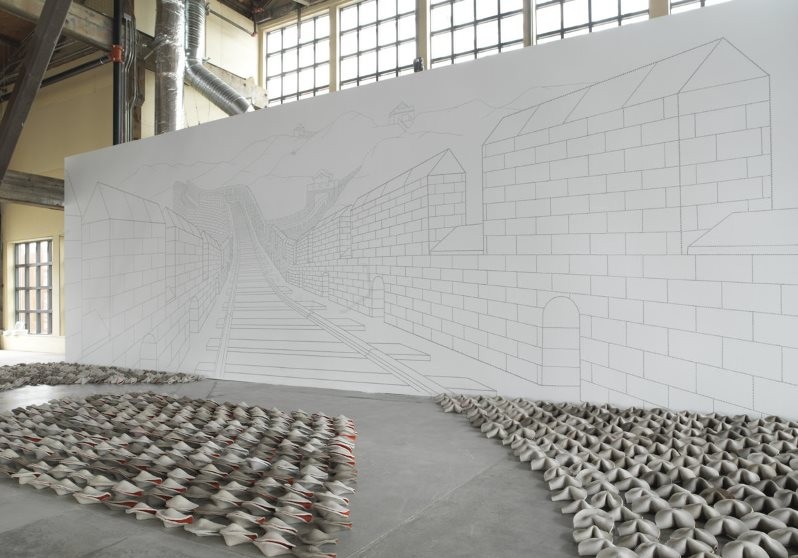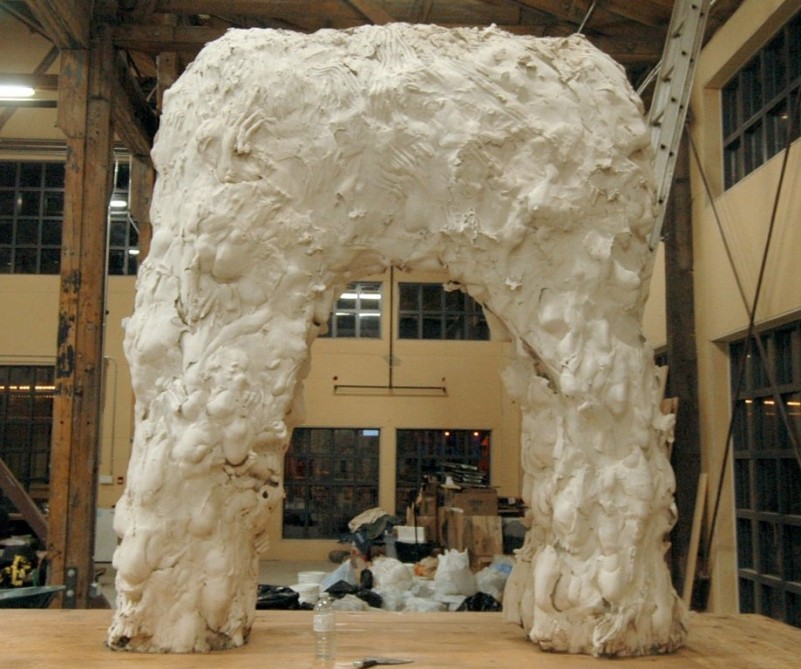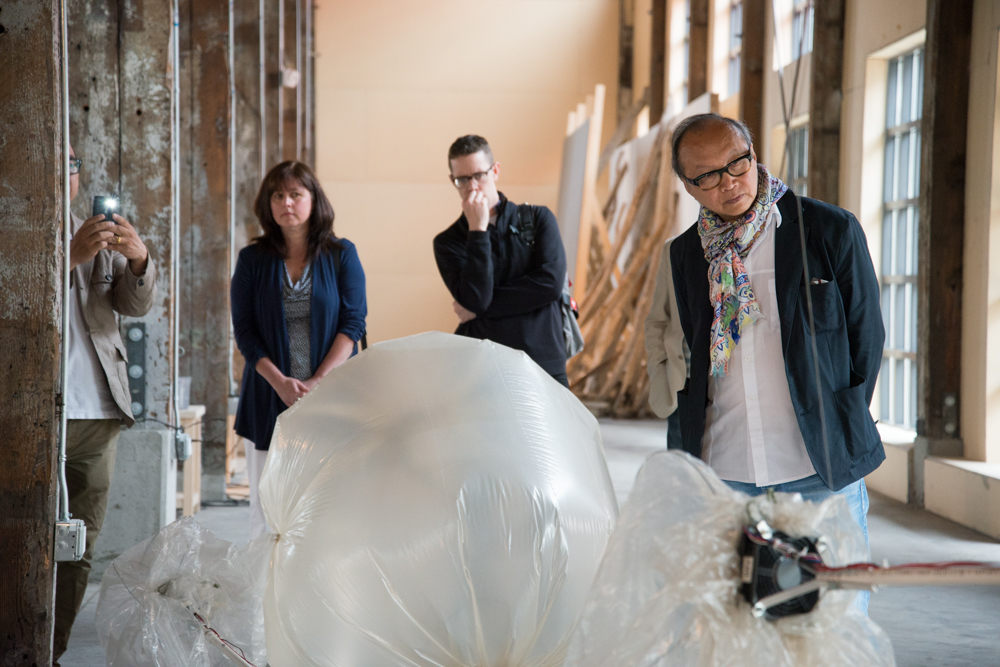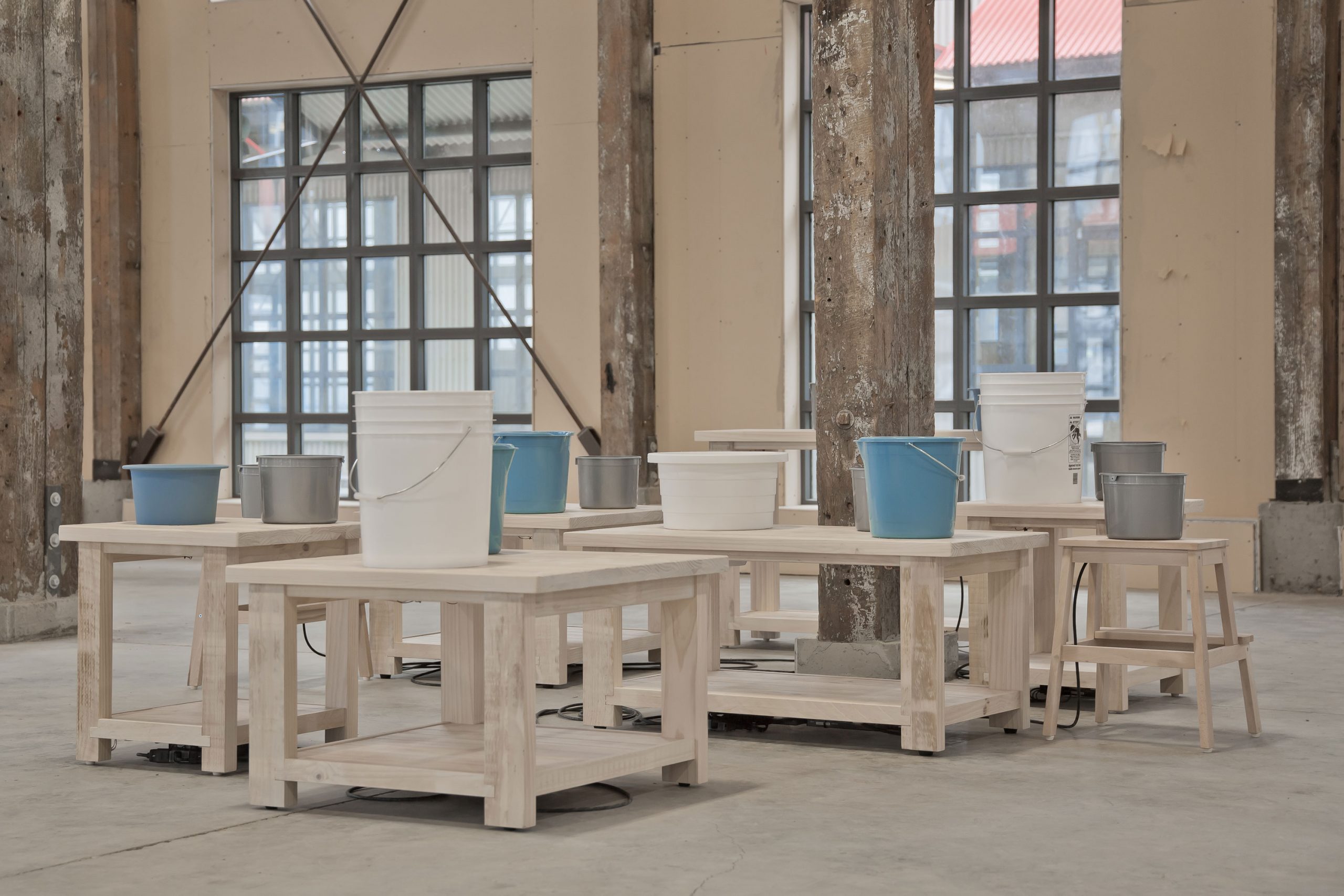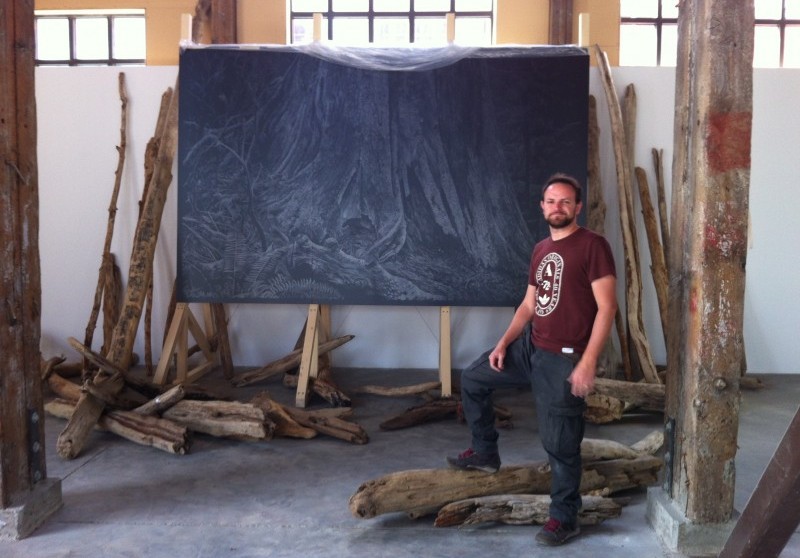Brazil’s Current State of Affairs
Social Studies - Grade 11
This inquiry challenge is intended to be used in connection with the full set of cross-curricular, multigrade inquiry challenges written for the entire Pavilion exhibition.The related unit plans are listed as “Related Material”. This unit of inquiry is not a recipe book but rather a launchpad to inspire new BIG IDEAS. We encourage you to use and/or modify one, or several of the BIG IDEAS below. Adapt it to the grade/ ability level of your students.
Enduring Understanding
Artwork has the power to reflect the stability and instability of culture, economy, government both past and present.
Guiding Questions for the entire Pavilion
In what ways can stigmatism be broken down and perception be changed about a nation? How would you describe the current state of affairs in Brazil? What are the collective voice of the Brazilian contemporary artists? How does the current state of affairs in Brazil relate to life in Vancouver, Canada and the world?
Guiding Questions for These Three installation (Castelo, Nadir #5, and Swing HD and Swing HN):
How does the current state of the Brazilian Economy reflect the artists’ themes of tension (stability and instability)?
Mind Opening
Choose or devise practices to encourage students to be open to new experiences and ways of thinking in your classroom. For example, the MindUP in-school program.
Discovery and Inspiration:
Launch the Project
• Introduce the Theme: Present the Enduring Understanding and Guiding Questions using vocabulary that is appropriate for your grade level.
• About Vancouver Biennale: Play a short video.
• Create Project Space: Brainstorm ideas to make the project theme visual and visible using bulletin boards, and/or a project corner to share relevant materials and inquiry questions and processes.
Reference Resources
• Vancouver Biennale 2014-2016 Exhibition Theme: Open Borders / Crossroads Vancouver
• Biennale International Pavilion/Focus on Brazil: for Information about the Pavilion
• Unit Plan Feature Art Installations and Artists: Castelo by Nathalia Garcia, Swing HD and Swing HN by Raul Mourão and Nadir #5 by Tulio Pinto):
• Related Unit Plans: Rainfall in Vancouver & Sao Paulo, Relating Art to the Human Body, Borrowing from Indigenous Materials: Totems, Relating Art to the Written Word, Tension in Canadian History
• Other Pavilion Brazilian Artists: Paulo Climachauska, , Juliana Cerqueira Leite, Mariana Manhães, Marcelo Moscheta, Gisela Motta & Leandro Lima, Studio in the City
Behind the Scene Making of the Pavilion Video
Learning to Learn:
Art Inquiry
• Ask students to write in their journal and share how would they describe the culture of Brazil before visiting the Pavilion and indicate how did they form these impressions. After the visit, ask the students if their perceptions have changed and if so, in what ways.
• BIG IDEAS Anywhere educators: Experience the Pavilion and its thought provoking Brazilian art anytime here using a 3D Navigator/Viewer – you can walk around the space with your mouse and interact with the art as if you are there! For best virtual art inquiry experience, freely explore the Pavilion and locate Castelo (Nathalia García) + Nadir #5 (Tulio Pinto) + Swing HD & Swing HN (Raul Mourão) for further inquiry challenges. Interact and experience these installation from different angles using the 3D Navigator/Viewer. Also view the Pavilion Guided Tour Video segment about the three artworks (from 1:16 to 3:24 min) MUTE ON.
• Use the Art Inquiry Worksheet to guide and capture their ideas and impressions. Customize or create your own Art Inquiry Worksheet as appropriate for your project and class needs.
• Click the Box Below to begin your Pavilion Virtual Exploration via 3D Navigator/Viewer provided by Real Estate Channel (Contact: info@realestatechannel.ca)
Shared Insights
• Sharing Art Inquiry Experience: Ask students to share the Art Inquiry Worksheet responses in class.
• Significant Aspects of the Artists’ Life & Work : Using the following information on Nathalia Garcia, Raul Mourão, Tulio Pinto the teacher creates stations detailing the artists’ life and work for students rotate through in small groups. Topics might include: (1) education and training; (2) life’s work; (2) materials and processes; (3) beliefs and values. At each station, students answer questions and/or complete tasks. For example, at the station “life’s work” students might plot the artists’ various installations on a map of the world. Encourage students to draw a parallels to their own lives and reflect on the countries/cities/communities that they have lived in and the significance of these location to them.
Inquiry Challenges featuring three Installations: Castelo (Nathalia García) + Nadir #5 (Tulio Pinto) + Swing HD & Swing HN (Raul Mourão)
• View Guided Tour Video: View the Pavilion Guided Tour Video introductory segment and segment about the three artworks (from 0 to 3:24 min) again with SOUND ON. The following four inquiry activities further delve into the current state of affairs in Brazil and the themes of Tension, Balance and Instability featured by these three artists’ installations:
• The Current State of Affairs in Brazil: Tension, Balance and Instability How do these three installations reflect the theme of tension (stability and instability)? Think, Pair, Share Activity: Students take their time viewing and reading the artist statement or listening to the docent tour of these three installations. Students are encouraged to view or imagine viewing the installations from various POV’s; moving through the pieces, lying underneath them and in the case of Swing touching and setting the pieces in motion. Individually, students jot down ideas relating to the larger themes of tension and instability on their scratch pads. Students are then paired and share their ideas from a vantage point where they can view all three works. Sets of pairs then join to form a group of four and share again.
• The Current State of Affairs in Brazil: The Brazilian Economy
How does the current state of the Brazilian Economy reflect the artists’ themes of tension (stability and instability)?
In groups of four students take turns reading the following article: Grand Visions Fizzle in Brazil. Then proceed to watch Brazil Tracks From Boom to Rust Video. From these two sources students must try to identify four themes or categories that are mentioned throughout the reading and video. From these themes students answer: Why is the Brazilian economy is in a state of tension and/or instability?
• Continuity & Change in Brazilian Politics –
How does the political history of Brazil reflect the artists’ themes of tension (stability and instability)?
1/ Using a Concept Attainment Activity, students to develop an understanding of the terms democracy and dictatorship. 2/ In groups, students to create their own timeline of Brazilian politics noting dictatorships and democracies. 3/ Groups collate photographs and text by using a digital timeline generator like Capzles* or by producing timelines on larges sheets of paper. 4/ For each ruling government or dictator on their timeline as students to note positive and negative traits of these governments or dictators. 5/ Introduce/reinforce the concept of Continuity & Change 6/ Students consider the following questions with regard to their timelines: What does the story of your timeline show? Were there times of more continuity or more change? What has changed the most in Brazilian politics? What has changed the least? What are some of the turning points? How could the story be divided into chunks or periods? What events might be most important for workers? What events might be most important for business owners? What events might be most important for a human rights advocate? Do you think the system of government in Brazil is improving or declining? Why? Students might part in a 4 Corners activity to share their opinions.
*(Capzles is a free iTunes app accessible from any computer. It allows users to tell a story using pictures, video clips, audio tracks and text. Users can place this media, called “moments”, together chronologically in a timeline. The result is called a “capzle”. Moments ca be viewed individually, or all can be viewed in progression. Capzles can be shared with friends by sending an email link.)
• The Current State of Affairs in Brazil: Brazilian Favelas
How do the Brazilian Favelas reflect the artists’ theme of tension (stability and instability) in Brazil?
Using the resources listed below, divide class into 7 Groups. Each groups is assigned one of the resources below: Group 1: Guardian podcast on surfing and favelas (June 3, 2011) Group 2: The Rio Times, Favelas Moved for World Cup and Olympics (May 10, 2011) Group 3: Al Jazeera, Brazil’s Disappearing Favelas (May 10, 2011) Group 4: National Geographic’s mini-documentaries Camera under Fire and Brazil’s Elite Police Group 5: Film on streetchildren in Sao Paulo (1981) Pixote: a lei do mais fraco (IMDB listing) Group 6: Film on the death of Pixote’s principal actor Who Killed Pixote? (IMDB listing) Group 7: Trailers to 5 movies on Favelas Each groups reads or views their resource and takes notes on how the Favela’s relate back to the artists’ themes. Each group is to complete a short presentation detailing their findings to the class.
Other Resources:
Caldeira, Teresa Pires do Rio. City of Walls: Crime, Segregation, and Citizenship in São Paulo. Berkeley:University of California Press, 2000.
Perlman, Janice E. The Myth of Marginality: Urban Poverty and Politics in Rio de Janeiro. Berkeley: University of California Press, 1976.
Pino, Julio César. Family and Favela: The Reproduction of Poverty in Rio de Janeiro. Westport, CT: Greenwood Press, 1997.
Sheriff, Robin E. Dreaming Equality: Color, Race, and Racism in Urban Brazil. New Brunswick, NJ: Rutgers University Press, 2001
Cross-Curricular Inquiry Challenges by Art Installation
Continue with additional inquiry challenges relevant for your class project-based learning experience.
Castelo/House of Cards (Natalia Garcia) Inquiry Challenge
View the Pavilion Guided Tour Video introductory segment and segment about the artwork (from 0 to 2:09 min) again with SOUND ON.
• Language Arts: How does Garcia work express hopes & dreams? Why do you think she chose these themes? How do you think they connect to current tensions in Brazil? In groups of four students discuss how the fulfillment of their hopes and dreams might be connected to the country in which they live. Continue with Questions: Do you think living in Canada make achieving these dreams easier than the dreams of students in Brazil? Extend this thinking by writing a one-page paragraph response describing their hopes and dreams and how they might be able to fulfill them. Sharing: students read their paragraphs aloud to partners and edit for fluency. Students peer edit their partner’s drafts checking for ideas, organization, voice, word choice and sentence fluency. Paragraphs are submitted to teacher for assessment.
• Technology Education, Mathematics: Minecraft – How can Garcia’s Castle be recreated using measurement, proportion and ratio? Students practice measurement, ratio and proportion students to create a scale model of Garcia’s installation using Minecraft, Lego or another medium of choice. MinecraftEdu ha customized modification of the game that helps facilitate organization and focus for teachers to use. Multiple samples of educational work using Minecraft can be found here.
• Social Studies: How could you re-make Garcia’s Castle with another hard-to-recycle item? Make the above project more challenging by asking students to suggest ways they could make a replica out of hard-to-recycle items like used mattresses. Students can apply their innovative thinking skills to come up with creative reuse of materials.
Swing HD & Swing HN (Raul Mourão) Inquiry Challenge
View the Pavilion Guided Tour Video introductory segment and segment about the artwork (from 0 to 1:15, 2:10 to 2:49 min) again with SOUND ON.
• Science/ Mathematics: How is Mourão’s installation related to the stability and instability of potential energy? Kinetic sculptures infuse simple geometric shapes with the complex poetry of motion. At first glance, the great metal cubes seem to exist simply as minimalist sculpture. Like a perpetual motion machine, his immense sculptures draw power from the tension of potential energy. The simple series of aluminum tubes proves a provocative study in contradictions—made of unyielding metal, and yet constantly in flux. Students investigate the concept of potential energy with the following swinging pendulum activity that demonstrates how potential energy (PE) can be converted to kinetic energy (KE) and back again.
Nadir #5 (Tulio Pinto) Inquiry Challenge
View the Pavilion Guided Tour Video introductory segment and segment about the artwork (from 0 to 1:15, 2:50 to 3:27 min) again with SOUND ON.
• Science: How is Pinto’s installation related to the stability and instability of solids? Play the following Ted-Ed Original Why is Glass Transparent? featuring Mark Miodownik discussing the scientific secret behind amorphous solids (Ted-Ed Original lessons feature the words and ideas of educators brought to life by professional animators). After viewing, students to create a flowchart detailing how the natural materials used in Pinto’s installation all relate to one another.
Reflection
• Teacher and students can reflect on their entire learning process by revisiting the Enduring Understanding and relevant Guiding Questions.
• How did the unit of study open inquiry, create cross–curricular learning opportunities and/or apply learning to real life situations? Has this unit of inquiry changed your opinions, values and world view? In what ways, if any, has it helped you grow as a learner?
Credits
Written by: Stephanie Anderson Redmond, B.A.; B.Ed.; M.Ed.; Ph.D. Student, Department of Curriculum and Pedagogy, UBC
©2014 Vancouver Biennale
